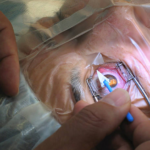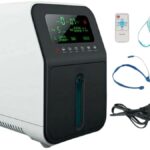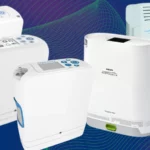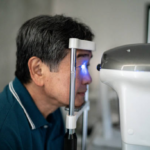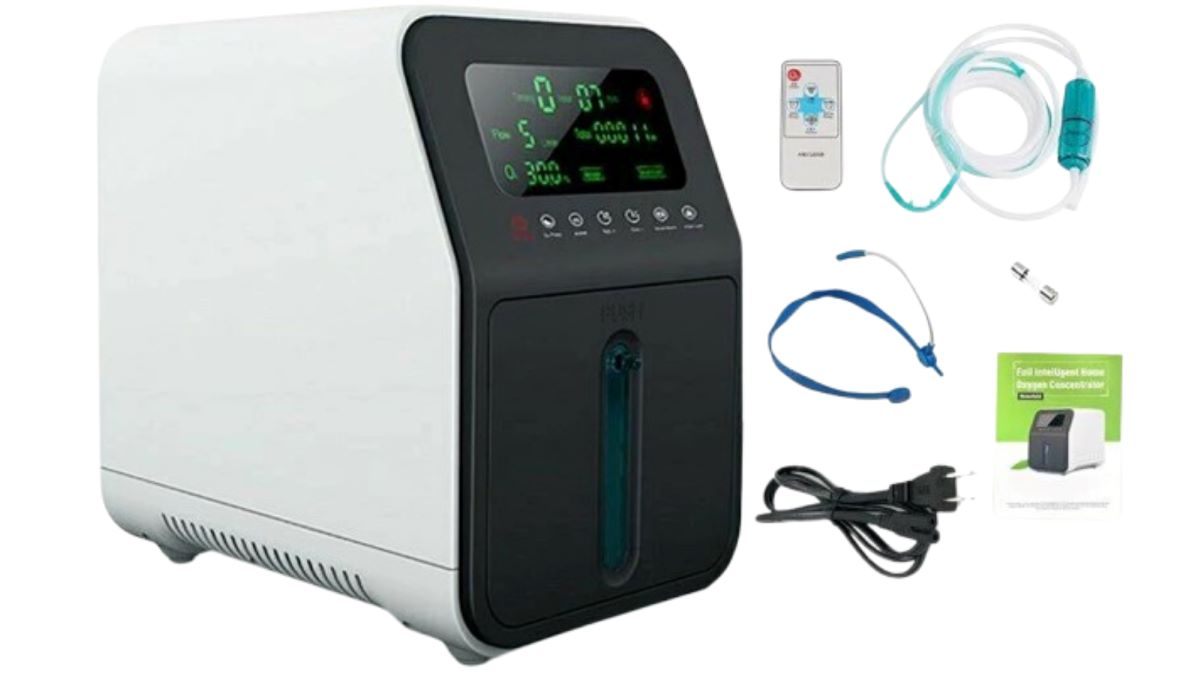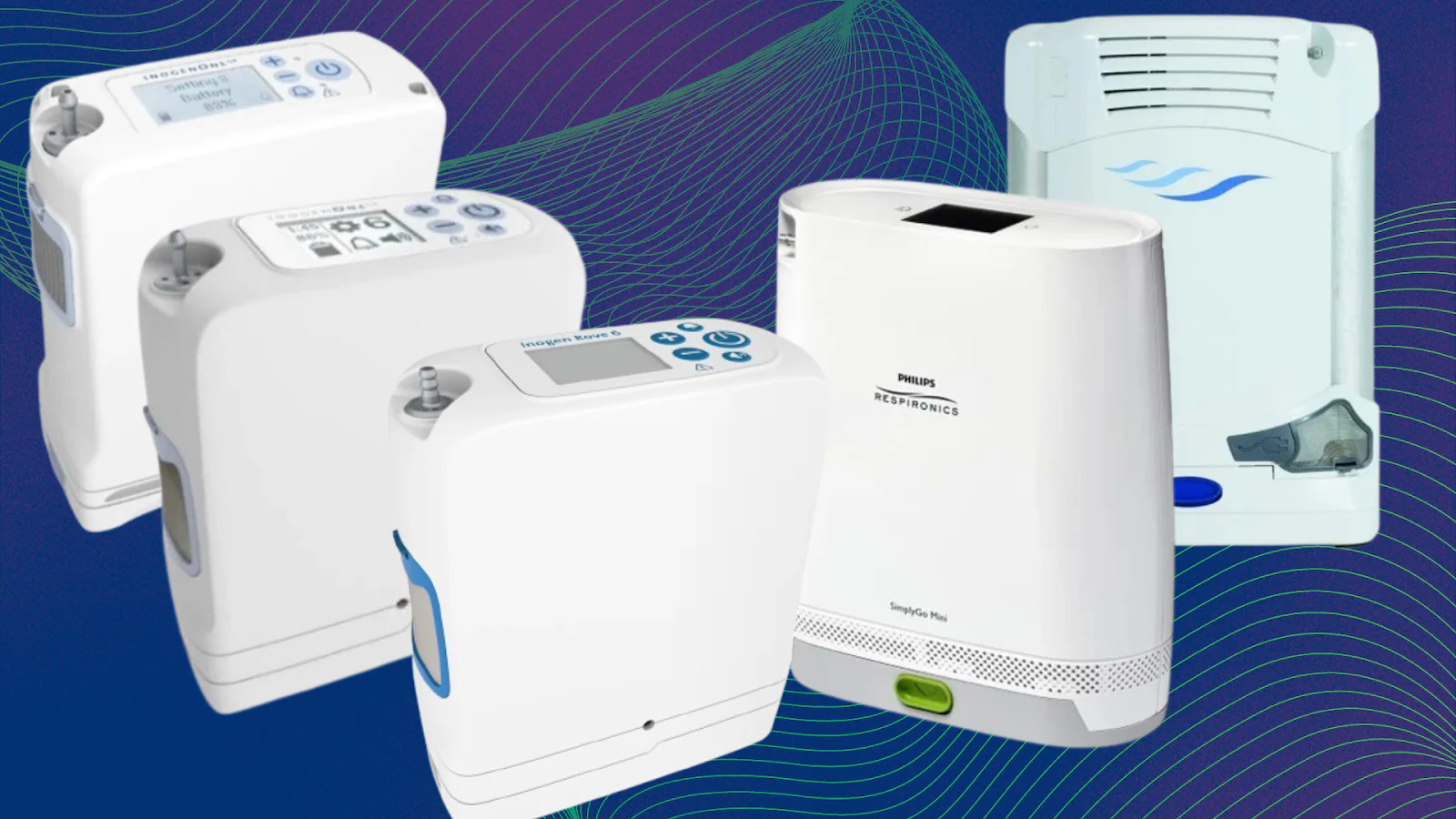What Are Home Oxygen Machines and How Do They Work?
Home oxygen concentrators are medical devices designed to provide a continuous supply of purified oxygen directly to patients in their own homes. These sophisticated machines work by drawing in ambient air from your surroundings and processing it through advanced filtration systems to extract and concentrate oxygen.
The oxygen extraction process involves several key steps:
- Air enters the concentrator through intake filters
- Nitrogen gets removed using molecular sieve technology
- Concentrated oxygen (typically 87-95% pure) gets delivered to the patient
- The remaining nitrogen gets released back into the atmosphere
Most stationary units measure approximately 60cm in height and weigh between 15-30 kilograms, making them stable yet manageable for home use. These devices feature user-friendly control panels with clear displays showing oxygen flow rates and system status.
Purified oxygen delivery occurs through adjustable flow rates, typically ranging from 0.5 to 5 litres per minute, depending on your prescribed needs. The concentrated oxygen travels through medical-grade tubing to reach you via nasal cannulas or face masks, ensuring you receive the precise amount of supplemental oxygen your healthcare provider has determined necessary for your condition.
Who Needs a Home Oxygen Machine?
Home oxygen therapy becomes necessary when your body cannot maintain adequate oxygen levels naturally. Healthcare providers prescribe these devices for patients with various respiratory conditions requiring oxygen therapy that compromise the lungs’ ability to deliver sufficient oxygen to the bloodstream.
Conditions That May Require Home Oxygen Therapy
The following conditions may require home oxygen therapy:
- Chronic obstructive pulmonary disease (COPD): This progressive lung disease restricts airflow and reduces oxygen absorption, making supplemental oxygen essential for daily activities.
- Pulmonary fibrosis: Patients with this condition benefit significantly from home oxygen therapy, as scarred lung tissue cannot efficiently transfer oxygen from inhaled air to the blood.
- Heart failure: Patients with heart failure may require oxygen therapy when their condition affects lung function or when fluid accumulation impairs breathing.
- Sleep apnoea: Severe cases of sleep apnoea may necessitate home oxygen prescription during sleep.
- Severe asthma: Certain individuals with severe asthma may require supplemental oxygen during exacerbations or acute attacks.
- Lung cancer: In specific circumstances, certain types of lung cancers may warrant home oxygen prescription.
How Healthcare Providers Determine Eligibility
Healthcare providers determine your eligibility through comprehensive blood oxygen level monitoring. The following tests are commonly used:
- Pulse oximetry readings: If your pulse oximetry readings consistently show levels below 88%, it may indicate the need for supplemental oxygen.
- Arterial blood gas tests: These tests measure the amount of oxygen in your blood. If the results show an oxygen saturation level under 89%, it typically suggests a requirement for additional oxygen support.
In addition to these tests, your doctor will also consider other factors such as:
- Your activity levels
- The severity of your symptoms
- How oxygen therapy might improve your quality of life
By taking into account these various aspects, healthcare providers can make informed decisions regarding the prescription of home oxygen therapy tailored to your specific needs.
See Also : Philips EverFlo Oxygen Concentrator Review: Features, Benefits & User Insights
What Types of Home Oxygen Devices Are Available?
Home oxygen therapy relies on three primary device categories, each designed for specific patient needs and lifestyle requirements.
- Stationary oxygen concentrators: These robust units plug into standard electrical outlets and continuously extract oxygen from ambient air, delivering concentrations of 87-95% pure oxygen. Weighing between 15-30 kilograms, these devices suit patients requiring consistent oxygen flow throughout the day and night. You’ll find them ideal for bedroom use, living areas, or any location where you spend extended periods.
- Portable oxygen cylinders: These lightweight aluminium or steel containers store compressed oxygen at high pressure, typically lasting 2-8 hours depending on flow rate and cylinder size. They offer freedom for active patients and can be easily transported for shopping trips, medical appointments, or short outings.
- Large oxygen tanks: These stationary units hold significantly more oxygen than portable cylinders, making them suitable for patients requiring continuous high-flow therapy or as backup systems during power outages. They provide an extended oxygen supply for patients with higher consumption needs.
Each option presents distinct advantages:
- Concentrators eliminate refill requirements
- Portable cylinders enable mobility
- Large tanks ensure uninterrupted supply during emergencies
How Is Oxygen Delivered to Patients at Home?
Your oxygen therapy reaches you through carefully designed delivery systems that ensure comfort and effectiveness.
Nasal Cannula
The nasal cannula serves as the most common interface, featuring two small prongs that sit gently in your nostrils. This lightweight option allows you to speak, eat, and drink normally whilst receiving continuous oxygen flow.
Face Mask
For patients requiring higher oxygen concentrations, a face mask provides complete coverage over your nose and mouth. These masks deliver oxygen more efficiently but may feel restrictive during daily activities.
Tubing Length
Tubing length typically ranges from 15 to 50 feet, giving you freedom to move throughout your home whilst remaining connected to your stationary concentrator. You can navigate between rooms, perform household tasks, and maintain independence without feeling tethered to one location.
Humidifier Bottles
Humidifier bottles attach to your oxygen machine to add moisture to the dry oxygen stream. This prevents nasal irritation, nosebleeds, and throat discomfort that often accompany prolonged oxygen use.
Your healthcare provider will specify your exact flow rate in litres per minute, typically ranging from 1 to 6 LPM depending on your medical condition and oxygen saturation levels.
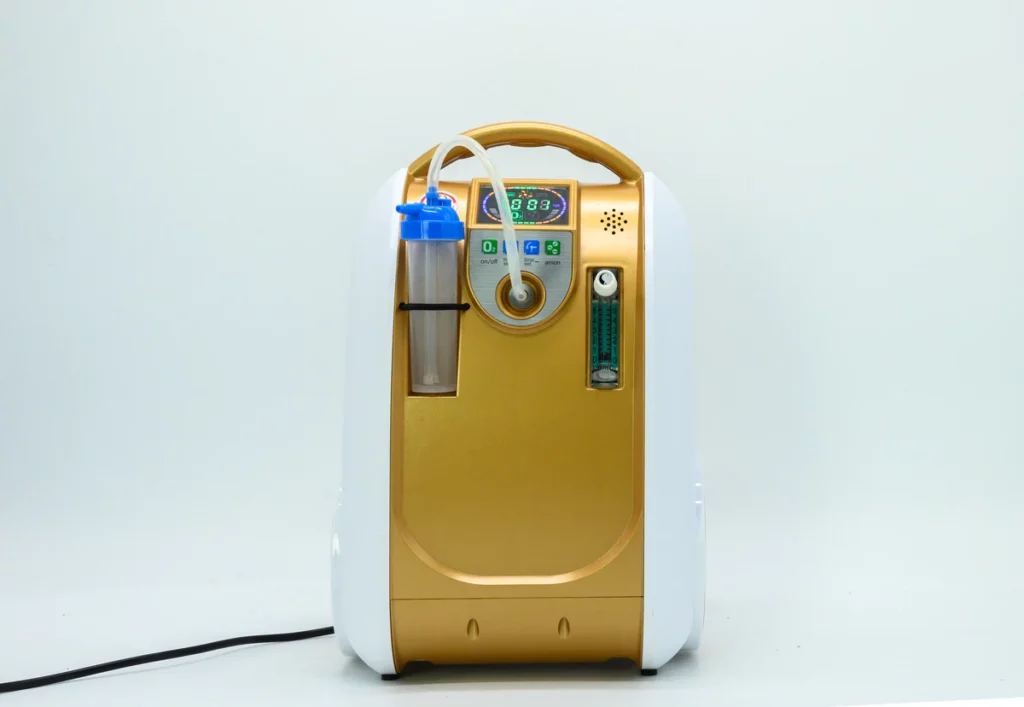
What Are the Safety Considerations When Using Home Oxygen Machines?
Fire safety with oxygen machines requires your constant attention and vigilance. Oxygen supports combustion, making any flame or spark extremely dangerous around your equipment. You must maintain a minimum distance of 3 metres between your oxygen concentrator and any heat sources, including cooktops, fireplaces, candles, or cigarettes.
Safe handling of oxygen equipment extends beyond basic placement. You should install smoke alarms in rooms where you use oxygen therapy and notify your local fire department about your home oxygen use. This information helps emergency responders prepare appropriate safety measures if they need to visit your property.
Avoiding flammable materials near oxygen protects you from serious accidents. Never use:
- Oil-based skincare products or petroleum jelly around your nose or mouth
- Aerosol sprays or cleaning products near the machine
- Alcohol-based hand sanitisers whilst wearing your nasal cannula
- Hair styling products or perfumes in the immediate vicinity
You should store flammable household items like paint thinners, cleaning solvents, and cooking oils in separate rooms from your oxygen equipment. Even seemingly harmless items like fabric softeners can pose risks when concentrated oxygen is present.
How Should Patients Care for Their Home Oxygen Equipment?
Proper maintenance of your home oxygen equipment ensures safe operation and prevents health complications. Here’s how you can care for your equipment:
1. Clean Nasal Cannulas and Masks Daily
- Use warm soapy water to clean nasal cannulas and masks every day.
- Rinse them thoroughly with clean water and allow them to air dry.
- Replace these accessories weekly or as recommended by your healthcare provider to prevent bacterial buildup and respiratory infections.
2. Maintain Humidifier Bottles Daily
- Empty and refill humidifier bottles with distilled water every day.
- Clean the bottle weekly with a mild soap solution, rinse completely, and allow to dry before refilling.
- Never use tap water, as minerals can damage your equipment and create bacterial growth.
3. Check and Replace Filters Regularly
- Check intake filters weekly and clean or replace them according to manufacturer guidelines.
- Clogged filters reduce oxygen output and strain the machine’s motor.
- Most patients need new filters every 1-3 months, depending on usage and environmental conditions.
4. Wipe Down Your Concentrator Weekly
- Use a damp cloth to wipe down the exterior of your concentrator once a week.
- Avoid using harsh chemicals that could damage plastic components.
5. Keep a Maintenance Log
Maintain a log to track cleaning schedules and filter changes. This will help you ensure consistent equipment performance.
How Does Home Oxygen Therapy Improve Patient Health and Lifestyle?
The benefits of home oxygen therapy extend far beyond basic medical treatment, transforming daily life for patients with respiratory conditions. When your blood oxygen levels reach optimal ranges through consistent oxygen support, you’ll experience significant symptom relief, particularly the reduction of breathlessness that often limits daily activities.
1. Improved Sleep Quality
Sleep quality improvements represent one of the most immediate benefits you’ll notice. Patients with sleep apnea or chronic lung disease frequently report deeper, more restorative sleep when using overnight oxygen therapy. Your body receives adequate oxygen during rest periods, reducing nighttime awakenings and morning fatigue.
2. Increased Activity Levels
Home oxygen therapy delivers remarkable improved activity levels with oxygen support, enabling you to:
- Perform household tasks with less fatigue
- Engage in light exercise or walking
- Participate in social activities within your home
- Maintain personal care routines independently
The enhanced mobility within your home environment means you’re no longer confined to bed or a single room. Modern oxygen concentrators with extended tubing allow movement throughout your living space, preserving dignity and independence whilst receiving essential medical treatment. This freedom significantly impacts mental wellbeing and quality of life for long-term oxygen users.
Moreover, oxygen therapy is not just about improving physical health; it also plays a crucial role in enhancing overall lifestyle by providing the necessary support for better health outcomes and increased independence.
What Support Services Are Available for Patients Using Home Oxygen Machines?
Healthcare providers serve as the foundation of your oxygen therapy journey, prescribing the appropriate equipment based on your specific medical needs and conducting regular monitoring to adjust treatment plans. Your doctor will assess your blood oxygen levels through pulse oximetry or arterial blood gas tests to determine the correct flow rate and usage schedule.
Medical suppliers for homecare services bridge the gap between prescription and practical implementation. Companies like Air Liquide Healthcare deliver comprehensive support through their extensive network of 152 diagnostic and therapy service locations across Australia, serving tens of thousands of home oxygen patients.
Key supplier services include:
- Equipment installation and maintenance by qualified technicians
- 24/7 emergency support for equipment failures
- Regular servicing schedules to ensure optimal performance
- Replacement of consumable items like filters and tubing
Patient education on usage forms a critical component of successful therapy. Suppliers provide hands-on training sessions covering proper equipment operation, safety protocols, and troubleshooting techniques. You’ll receive detailed instruction manuals, demonstration videos, and access to helplines staffed by respiratory specialists who can answer questions about your specific equipment and treatment requirements.
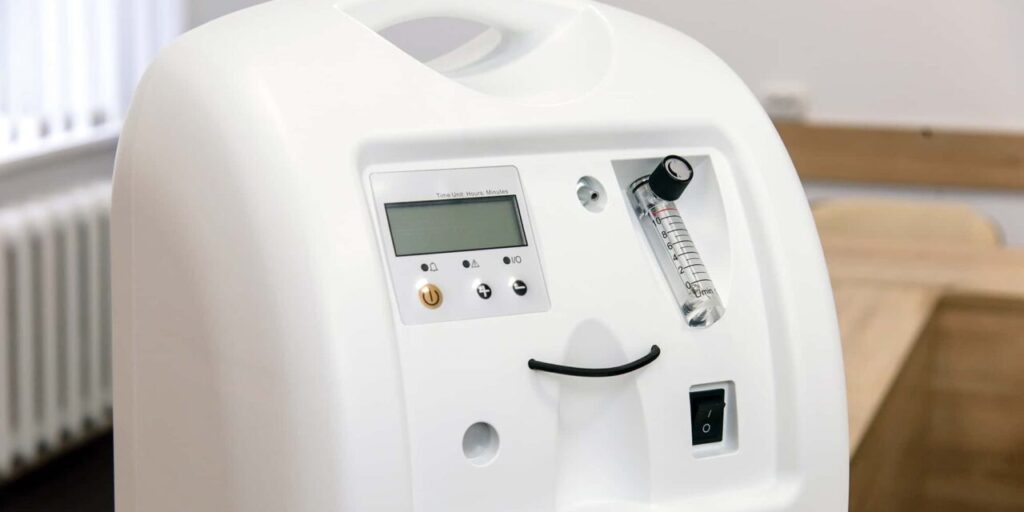
Can Patients Travel or Be Mobile While Using Home Oxygen Therapy?
Portable oxygen units for travel have transformed the ability of oxygen therapy patients to move around. There are two options available: lightweight portable concentrators that can be charged in cars or compact oxygen tanks designed for short trips.
Battery-powered concentrators typically provide 4-8 hours of operation, while portable tanks offer predetermined amounts of oxygen based on their size.
Planning Travel with Home Oxygen Therapy
When planning travel with home oxygen therapy, it is important to work closely with your healthcare provider and equipment supplier. This should be done at least two weeks before your planned departure date. Here are some key tasks you need to complete:
- Obtain a letter from your doctor confirming your oxygen requirements
- Arrange backup equipment for your destination
- Verify airline policies regarding the transport of oxygen equipment
- Ensure that you have sufficient battery life or charging capabilities for your devices
Your supplier can assist in arranging the delivery of equipment to hotels or providing travel-friendly units. They will also guide you through the requirements set by the Transportation Security Administration (TSA) if you are flying domestically or internationally.
Essential Tips for Travelling with Home Oxygen Therapy
Here are some essential tips to keep in mind when travelling with home oxygen therapy:
- Carry spare batteries: Always have extra batteries on hand to ensure that your portable concentrator remains powered throughout your journey.
- Pack cleaning supplies: Bring along any necessary cleaning supplies to maintain the hygiene of your oxygen equipment during travel.
- Maintain prescribed flow rate settings: It is crucial to adhere to the flow rate settings prescribed by your doctor, even when using portable oxygen devices.
- Inform accommodation providers: Always inform hotels, motels, or other accommodation providers about your specific oxygen equipment needs. This will help them make appropriate arrangements for room placement away from heat sources.
By following these guidelines and being proactive in your travel preparations, you can enjoy greater mobility and flexibility while using home oxygen therapy.

